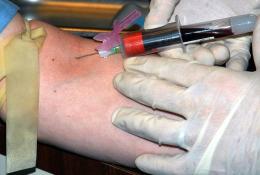30 Things You Need to Know About The Medical Device Industry
30 Things You Need to Know About The Medical Device Industry
“I think it’s important for members (of Congress) to hear from industry.” So said Carrie Hartgen, a vice-president at AdvaMed, the medical device industry association, discussing another coordinated lobby effort before Congress. Her comment seems insincere because the fact is, Congress is already hearing a lot from the medical device industry. In fact, the industry’s lobbying is particularly acute right now because Congress is scheduled to pass a law reauthorizing user fees that funds review of applications for devices before they can be sold to the public. Lobbyists are arguing for changes that would speed up approval of medical devices in a system that in fact needs to be strengthened to protect patients from defective devices, instead of being weakened to pad profits. While AdvaMed continues to put its foot forward in Washington, below are 30 facts that its industry lobbyists will probably neglect to tell Congress.
* All of the facts below and additional information are compiled in the Public Citizen report, Substantially Unsafe.
MONEY, POLITICS, AND PROFIT, BY THE NUMBERS
(1) In the third and fourth quarters of 2011, Congress, the White House, the Food and Drug Administration (FDA), and other executive branch agencies received visits from at least 225 registered lobbyists for the medical device industry.
(2) Of the 225 registered industry lobbyists, 106 (47.1 percent) previously held positions as congressional staff or in federal agencies.
(3) At least 36 device industry lobbyists hosted campaign fundraisers for members of Congress in 2011. These 36 lobbyists held 40 separate fundraisers for 31 members of Congress.
(4) The record shows that large companies with big profits are invoking the alleged plight of small companies to win a more permissive process for themselves.
(5) Collectively, the U.S. device industry earned $12.4 billion in profits in 2010, a 57 percent increase over its $7.9 billion profits in 2009.
(6) Five of the seven medical device companies spending the most on lobbying since 2007 are members of the Fortune 500.
(7) From 2011 through January 2012, medical device industry representatives had 30 meetings with the FDA, while consumer groups had only 12 meetings.
(8) The device industry made more than $19.9 million in campaign contributions between the 2006 and 2012 election cycles.
FLAWED APPROVAL PROCESSES
(9) Every year, the FDA receives reports of more than 200,000 device-related injuries and malfunctions, and more than 2,000 device-related deaths, according to an FDA consultant.
(10) The FDA’s Premarket Approval (PMA) process is intended to assess the safety and effectiveness of high-risk medical devices, including life-sustaining devices such as pacemakers, heart valves and implantable cardioverter-defibrillators (ICDs). The standard for approving a device under the PMA process is much lower than the one required to approve drugs. The approval of a new drug requires at least three phases of clinical testing, including at least two randomized, controlled, phase 3 clinical trials in most cases. In contrast, a PMA application for a device typically does not require more than one clinical trial, and that trial need not be as scientifically rigorous as would be required for a new drug.
(11) Only 1 in 100 new moderate- or high-risk devices are approved under the PMA process, which is ostensibly for high-risk devices. Most are approved through much less rigorous processes.
(12) Device makers are immune from most product liability claims arising from allegedly defective devices if the device in question was approved under the PMA process. That is, if the FDA approves a dangerous or defective device through the PMA process, federal law generally bars consumers harmed by the device from seeking redress in court.
(13) 510(k) Clearance – A 1976 federal law also allows future proposed medical devices to be cleared under the 510(k) process if applicants demonstrate that the new device is “substantially equivalent” to a device already on the market (a predicate device). As a result, very few products cleared through the 510(k) process are subject to clinical testing. The Supreme Court spelled out the logical flaw in relying on substantial equivalence in a 1996 ruling: “Substantial equivalence determinations provide little protection to the public … If the earlier device poses a severe risk or is ineffective, then the latter device may also be risky or ineffective.”
(14) Industry’s core claim is that the FDA is taking too long to clear devices. But at least 95 percent of moderate- and high-risk devices are reviewed through the more lenient 510(k) process. The FDA says that it completes 90 percent of 510(k) analyses within 90 days and 98 percent of 510(k) analyses within 150 days.
(15) Predicate Creep: Over time, manufacturers may submit a series of products for approval under the 510(k) process, with each product differing slightly from an earlier product, either in the purported intended use or in technological features. Eventually, this allows the clearance of a device that is substantially dissimilar from the initially marketed product in a chain of sequentially cleared devices. This is called “predicate creep.” An example of this problem was the 2008 clearance of the Pathwork Tissue of Origin Test, which is a device that diagnoses tumors. Ultimately, the FDA’s sequential substantial equivalence rulings of medical devices created “predicate creep” and permitted it to clear a device for diagnosing tumors based on its similarity to a device that screens for illicit drug use.
(16) Under both the PMA and 510(k) processes, the FDA is obliged to fashion its requests for information in the “least burdensome” manner possible to the manufacturers from which the information is sought. Currently, the FDA asks only 8 percent of device manufacturers seeking clearance under 510(k) (excluding makers of in vitro devices) to provide clinical data from studies in patients.
SYSTEM TO RECALL DEFECTIVE DEVICES, DEFECTIVE
(17) The agency primarily depends on manufacturers and users, such as hospitals, to report events of injury or death related to the use of their devices. Manufacturers, in turn, are often unable to locate patients implanted with dangerous devices because there is not an adequate system to track which patients have received their products.
(18) Recalls are rising. The number of recalls for moderate- and high-risk devices in fiscal year 2011 (1,201) more than doubled from 2007 (566). (A recall may involve actions such as inspecting the device for problems, repairing or re-labeling the device, issuing notifications of a problem, or monitoring patients for health issues. Most recalls are initiated voluntarily by device manufacturers).
(19) The FDA lacks an internal system to analyze recall trends, which it might otherwise use in future decisions when reviewing a device for PMA approval or 510(k) clearance.
(20) Under the Safe Medical Devices Act of 1990, hospitals and healthcare facilities are required by statute to file a medical device report to the FDA and the manufacturer if there is a suspected device-related death. However, when there is a serious injury related to device use, facilities must only notify the manufacturer or, if the manufacturer is unknown, the FDA.
(21) There have been times when manufacturers chose not to send reports to the FDA when the facts of an adverse reporting to them clearly warranted disclosure. This occurred in the cases of Teleflex Medical’s Hem-o-lok ligating clips and Guidant’s Ventak Prizm ICDs. When the FDA reviewed the two companies’ adverse event reports, it found many instances in which a device reasonably could have caused harm to a patient but in which the companies determined the device was not to blame. Although user-facilities may have reported the adverse incidents to the FDA, both manufacturers withheld information that impeded the agency from taking appropriate action.
(22) The recall process does not remove defective devices from market in a timely manner. In 2009, a sixth patient died as a result of malfunctions of the Hem-o-lok surgical clip, which had been the target of a series of recalls since 2004.
(23) There is no reliable system in place for manufacturers to locate actual patients who have received their devices. Most manufacturers trace products only to distributors or healthcare facilities. Facilities, in turn, are charged with contacting the patients. Because of complications in this process, warnings sometimes fail to reach the right doctors or patients in time. For example, the manufacturer of a recalled hip implant said it could not trace the implants to the specific patients who received them.
(24) According to an October 2009 finding by the Department of Health and Human Services inspector general, the FDA does not adequately use adverse event reporting to identify trends in problematic devices.
(25) The FDA does not have clear policies in place to determine whether a recall really worked.
INDUSTRY-FRIENDLY LEGISLATION INTRODUCED
(26) As the reauthorization of the Medical Device User Fee Act approaches, members of Congress have introduced industry-friendly legislation aimed at further easing the approval and clearance processes for medical devices which would:
• further reduce the already weak standards for clearing and approving medical devices;
• raise the priority of promoting of medical innovation in relation to the FDA’s core mission of protecting public safety;
• substantially weaken the “conflict of interest” prohibition for serving on the FDA advisory committee that oversees device approvals, allowing more people who have a financial interest in the medical devices under review by the committee to review applications;
• expand the pool of third-party companies that can review a device application to include those that have financial relationships with the device industry;
• require the FDA to rule on third-party reviews of a device within 30 days or granting automatic approval of the device on the 31st day, which would result in the elimination of independent oversight by FDA officials for many devices;
• prohibit the FDA from disapproving the methods used in any type of clinical trial conducted by a medical device company, including clinical trials conducted on human subjects.
PRESCRIPTIONS
(27) No future medical device premarket review system should rely on “substantial equivalence” to a device already on the market as evidence of safety and effectiveness.
(28) The standard for approving any high-risk (class III) device under the PMA process should be changed to “substantial evidence” of safety and effectiveness from the current “reasonable assurance” that the device is safe and effective. The current low standard threatens patient safety because it accepts data from poorly designed and uncontrolled clinical trials as acceptable evidence for establishing the safety and effectiveness of a device during the review process.
(29) Drop the least-burdensome requirement. For all submissions, the requirement that the FDA evaluate devices in a manner that is “least burdensome” upon manufacturers should be eliminated. It is in the best interests of patients and device manufacturers alike for the FDA to make its judgments based on all necessary information.
(30) Implement a requirement for all moderate- and high-risk devices to have unique device identifiers to allow for efficient and effective tracking of medical devices, particularly in the event of a recall.
(From Public Citizen)








